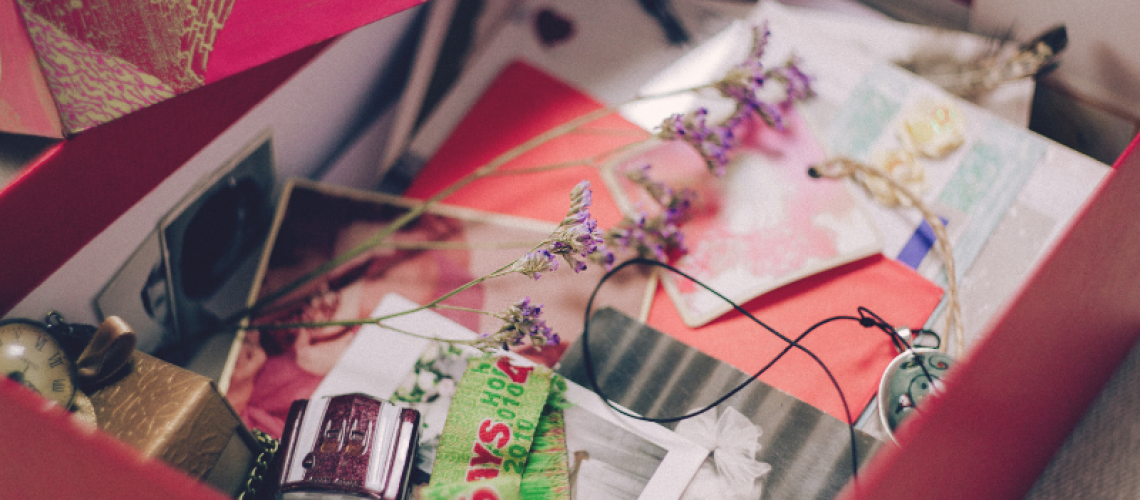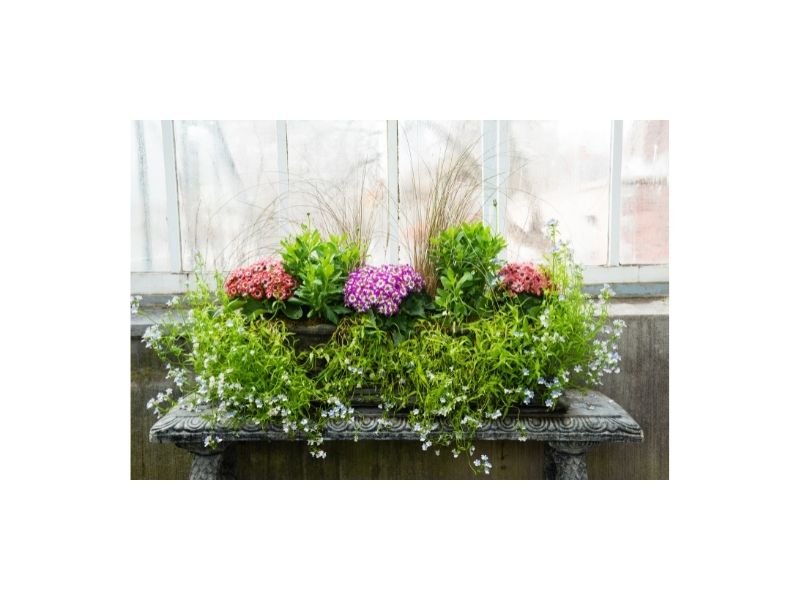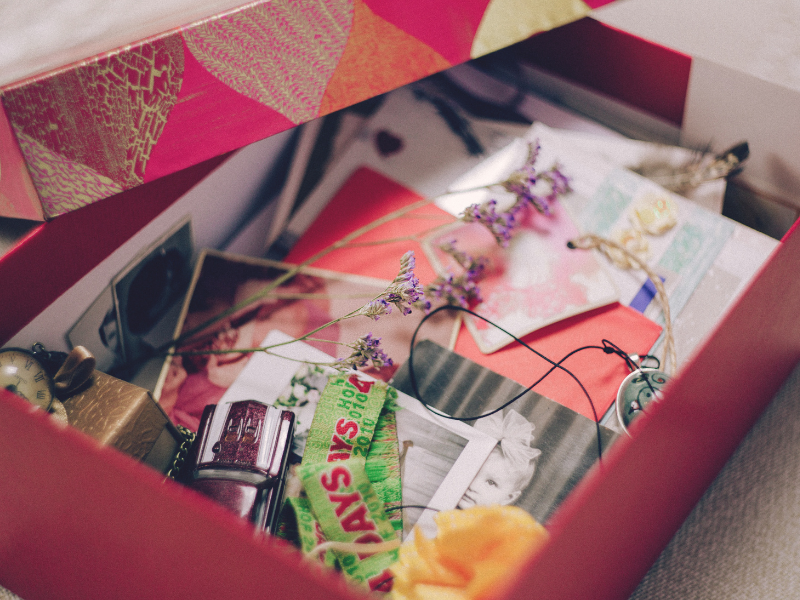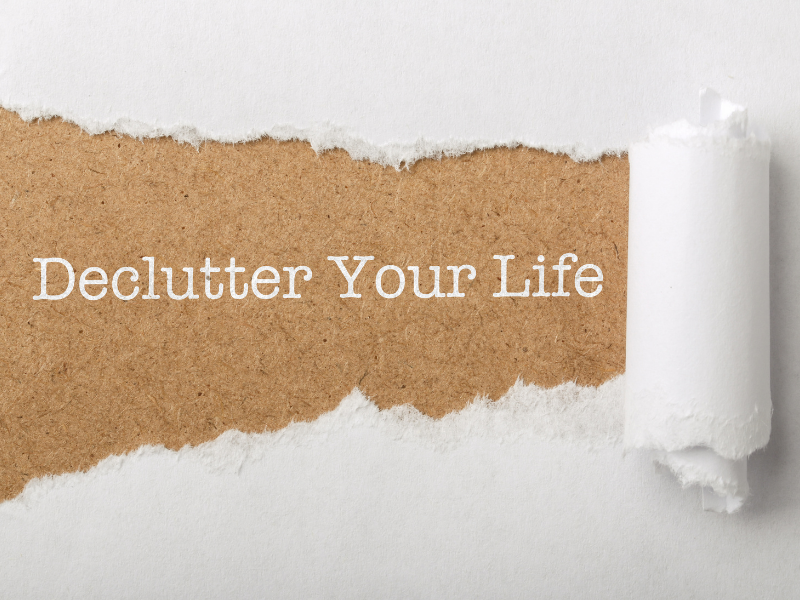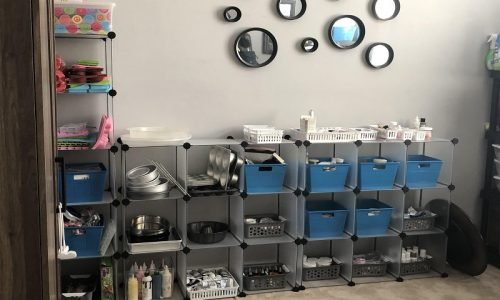February is a month of many things including Valentine’s Day. This leads me to think about many of my past experiences and also start looking around at all the items in my house and how so many of them contain so many memories. I think most people have sentimental items and I think this is a good as long as the items don’t start to take over our homes.
There seems to be a trend that organizers and declutterers refer to mementos as sentimental clutter; I take exception to that. These items are not clutter in the traditional sense; these items have meaning and significance and history to people. Sentimental items will be different for everyone but the common link is that we attach emotion and meaning to the items.
What I want talk about today is why we have sentimental items, how we can approach our collections, ways to honor the memory in history that we have attached to these items, and a process to review and decide what makes sense to keep and what we can let go.
Why we keep objects:
Guilt and Pain
People keep items for any number of reason regardless these items are emotionally charged. It could bring back a specific event that you really enjoyed or remind you of a person no longer here or a place or time/era. We all save concert tickets and T-shirts, knick-knacks, playbills, kids art and most of us have enough photos to start our own wing at the Smithsonian.
Sometimes we save these items because we don’t know what else to do with them and we feel guilty getting rid of them. I think guilt might be the #1 cause of sentimental-item-overflow. What we need to realize is that getting rid of items does not mean that we are getting rid of any of the memories or experiences. Those memories and experiences will always be with us and are not necessarily triggered by objects. Because they don’t know what else to do and they feel too guilty to free the items, people will put the sentimental items into a box and then store that box up on the closet shelf or under the stairs or even in a storage unit and never look at the items again. In some cases people are paying to store items that they never look at, don’t use and possibly don’t remember they have. All because they don’t know what to do with them or feel too guilty to let them go.
Pain can be a big motivator to hold onto things. We think that by holding onto items it might help the pain of the event or loss. Also we may feel that if we give away the item we are giving away the memory of the event or somehow dishonoring that person. It is not rational but it is real and can make reducing items quite difficult.
Psychology
We are hardwired to be sentimental and our brains think that there are really good reasons to rationalize why to hold on to sentimental items: we feel closer to a lost individual when we touch a shirt or see a picture or we are afraid of forgetting the memory if we let go of the item that represents it. It is very hard to separate feelings and memories from the item BUT If everything is sentimental nothing is sentimental. If your home is ruled by past items are you making it harder to create new memories? We can and should live in the present and still honor the past.
Approaching our sentimental items
All or Nothing?
I believe that some of us may have an all or nothing view of the world when addressing sentimental items; meaning that we feel either we need to keep all or eliminate all. But it is unnecessary to rid yourself of all items. I am not proposing a minimalist approach at all. What I am proposing is to keep the most significant, best or most important. It makes no sense to keep duplicate items, poorly written papers, shriveled up carnations, or pictures of people that we have no idea who they are.
Feelings of guilt when you start deciding to pair down some of your sentimental items is not uncommon and I think it’s important to remember that just because you are liberating an item that does not mean you’re giving away the person, or your love for that person or that person’s love for you or your excitement about the experience.
Your items should have positive emotional value. Holding onto items that invoke negative or sad memories can be tricky. Creating a memory box for a family member/friend who has passed can be very healthy but holding onto a picture of a bad-break-up-ex-boyfriend is a bad idea. What we decide to hold onto should bring us smiles and happiness. Letting go of the physical can be very freeing and carefully curating our collection will guarantee that the items we keep will be truly special and appreciated.
Letting Go
Once you are ready to start addressing your items please give yourself grace, space and time. Sometimes this will be an easy process and sometimes it will be quite challenging. Work in small designated increments of time or in predetermined number of boxes. Before you even start to decide about the mementos use this first review just to go through the box or chosen items and relive the memories, person, or experience. Take your time and savor the experience. Then replace the items back. That’s it, no decisions, no problems, just reliving the experiences. Next schedule another time-block to go back through the same box and decide what to do with each item. Following this process allows you to handle the items without becoming overwhelmed with the emotions. The second box-opening will be much easier because you have already processed the past experiences and are ready to make decisions about the contents.
Another method is to go through boxes with a family member or friend. You can share the story/history with them and in turn they provide objectivity and a different perspective which may encourage you to free items.
Take a picture before releasing the item-this often makes it much easier. Later you can choose to keep or purge the image.
Reframe the whole experience : by setting things free you are giving them a new life, and allowing others to create new memories. The items can become meaningful for someone else too.
Curated Contents
Now that the items are parred down you have the mementos that you actively decided to keep, not out of default or guilt. This is a great opportunity to choose how to keep those items.
Ways to honor our memories:
Create a memory box or a shadow box. Include a narrative for the items.
Pick 1 or 2 most significant items from a collection and keep/display those.
Designate a shelf or other specific area for curated collections so that everyone can see and enjoy them.
Create an album from a specific event or time period such as high school, wedding, parent’s anniversary, trip, etc.
Use the item one last time or have an event around releasing it. For example gather with your gal-pals and have blast trying on the old bridesmaids dresses before you all decide to donate them to a prom-closet or theater group. Host a “Dinner with Grandma’s China” for your family and extended family/friends. Afterwards each person can take home whatever pieces they like; the rest is donated.
Offer items to other family members; if here are no takers then it moves on—guilt free.
If you are talented then repurpose items such as jewelry, china, frames etc
If you have many of the same/similar items(wreaths, frames, crafts etc) keep 1 or 2 that you like the best or represent the best of the group.
There are numerous companies who will take digitize children’s art work.
Your old home movies, photos and slides can be digitized as well be several companies.
If something makes you happy by-all-means keep it but make sure to try and display it or visit it regularly. There is no such thing as too much happiness.
Slip notes into boxes or items telling people the history and stories behind them. Also write notes to people giving them permission to dispose of the items after you are gone. What a wonderful gift of eliminating any guilt.

